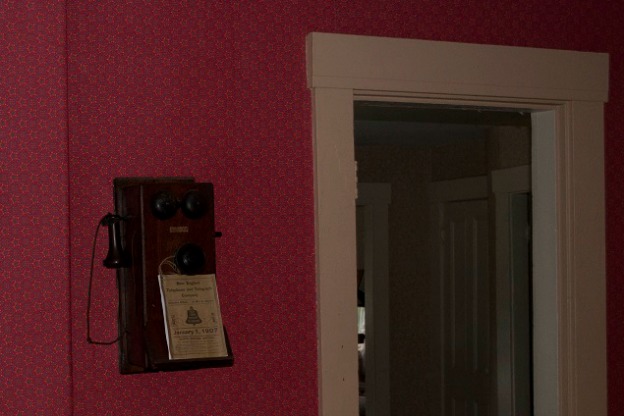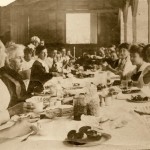Telephone service in the 1920s and 30s in rural Indiana was a homegrown affair, sometimes connecting one household with only one other.
In 1920, according to a Purdue University study, two-thirds of Indiana farmhouses had telephone service. In what seems an odd series of statistics, by 1940 that percentage was down to 45% and then climbed to 66% in 1948.
What accounts for the decline and the subsequent rapid increase? One answer to that question is that the “service” many rural Hoosiers enjoyed during the first decades of the twentieth century was far from the telephone service enjoyed by town and city residents. In the 1910s and 1920s, many farmers created their town small telephone systems.
[pullquote][My father and the neighbors] organized their own telephone company . . . . cut poles out of the woods . . . [and] got the wire and they strung it.[/pullquote]
Delpha Borradaile of Union County, Indiana, remembered that her father had a line “over to the neighbors”—his brother-in-law and family. “They worked together,” she remembered, “and they had one of the first phones . . . . and that was just two farmers that had that.”
Ada Clarkson of Jennings County recalls that in 1916 her father and several other area farmers “organized their own telephone company . . . . cut poles out of the woods . . . [and] got the wire and they strung it.” All of the men would have to gather together to fix fallen lines and poles. When the small co-op ceased to operate, the Clarkson farm and others were without a telephone “for a long time.”
When more regular service was extended out from small surrounding towns, often one farmhouse became a kind of exchange. Opal Whitsett of Scott County recalls she and her family had “one neighbor . . . who had a telephone, and they delivered messages for everyone.” Evelyn Buchanan, also of Scott County, recalls a similar set-up with her neighbor who would “just raise the window and holler” if Evelyn had a phone call.
With the post-World War II increase in rural electrification also came an increase in phone lines crossing the farmfields of rural Indiana. Farm families could count on regular power and phone service coming into their homes and their barns. As Carol Kubat of LaPorte County commented, “What would you do without [the telephone] if you had to give it up?”
Sources: Eleanor Arnold, ed., Party Lines, Pumps and Privies: Memories of Hoosier Homemakers, part 2; Barbara Steinson, “Rural Life in Indiana, 1800-1950,” IMH September 1994
A Moment of Indiana History is a production of WFIU Public Radio in partnership with the Indiana Public Broadcasting Stations. Research support comes from Indiana Magazine of History published by the Indiana University Department of History.























